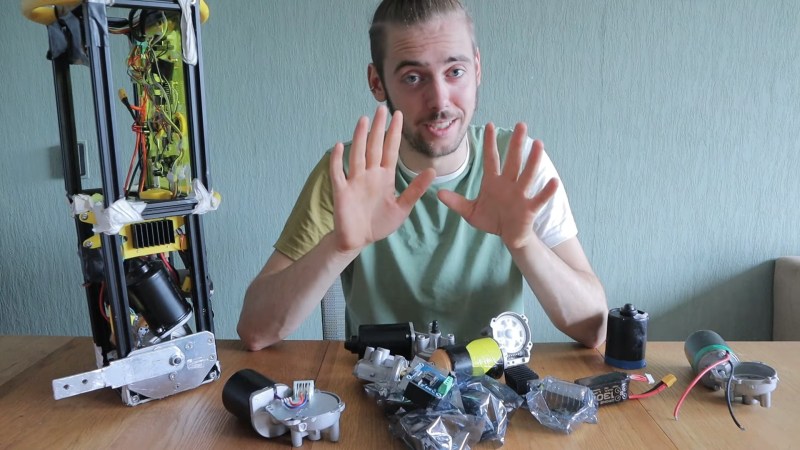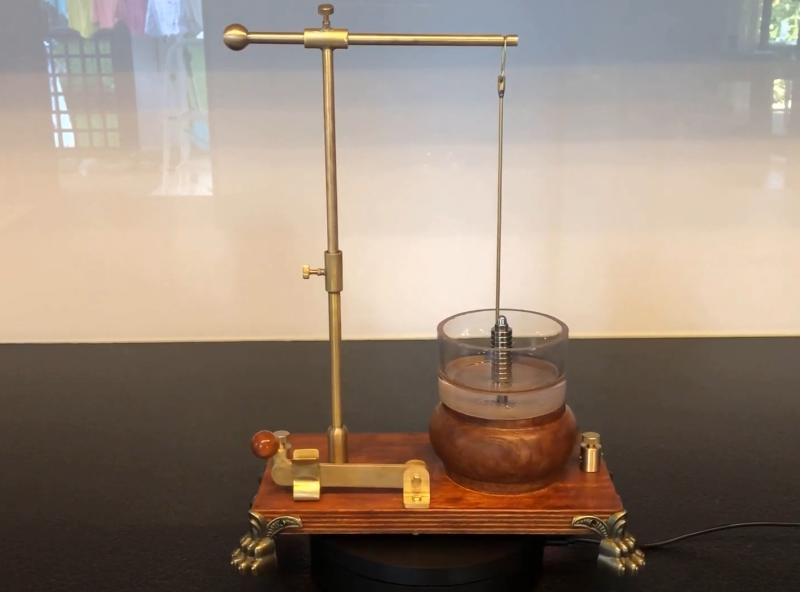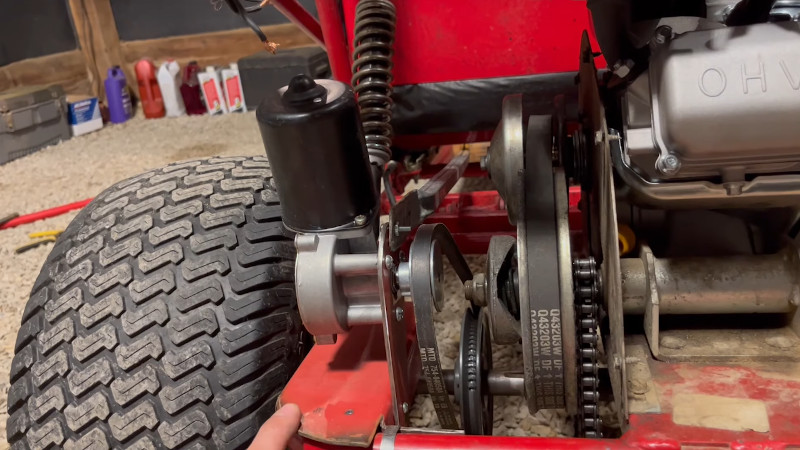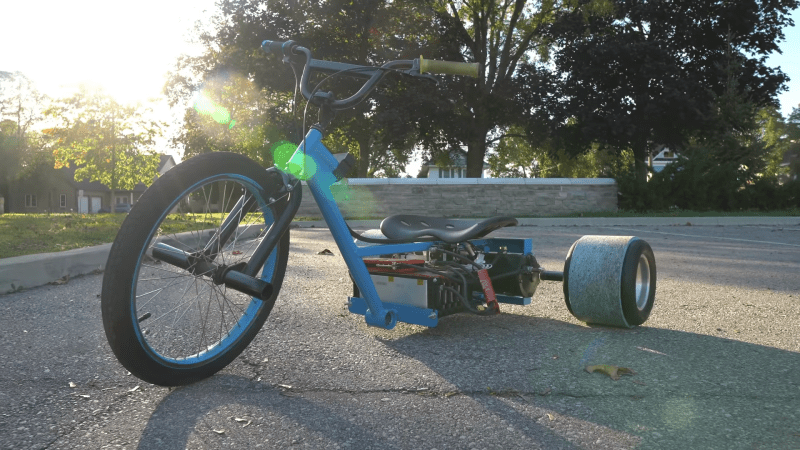A Wiper Motor 101

Need a powerful electric motor on the cheap? [Daniel Simu] and his friend [Werner] show us the ins and outs of using windshield wiper motors. Through many examples and disassembled …read more Continue reading A Wiper Motor 101
Collaborate Disseminate

Need a powerful electric motor on the cheap? [Daniel Simu] and his friend [Werner] show us the ins and outs of using windshield wiper motors. Through many examples and disassembled …read more Continue reading A Wiper Motor 101

Although new electric motor types are still being invented, the basic principle of an electric motor has changed little in the past century-and-a-half: a stator and a rotor built of …read more Continue reading Replicating Faraday’s 200-Year-Old Electric Motor

Go-karts are a huge amount of fun, but often lack the most basic of mechanical conveniences such as a reverse gear. You can’t start a small four-stroke engine in reverse, …read more Continue reading Go-Kart Reverse Without The Pain

Starter motors aren’t typically a great choice for motorized projects, as they’re designed to give engines a big strong kick for a few seconds. Driving them continuously can often quickly …read more Continue reading Heavy-Duty Starter Motor Powers An Awesome Drift Trike
Back in high school, all the serious gearheads used to brag about two things: their drag strip tickets, and their dynamometer reports. The former showed how fast their muscle car could cover a quarter-mile, while the latter was documentation on how much power their carefully crafted machine could deliver. What …read more
Continue reading This DIY Dynamometer Shows Just What A Motor Can Do
Messing about in boats has always held a curious appeal for the hardware hacker. Perhaps that’s because it remains an approachable way to make something that moves under its own power with a bit of speed, and barring calamities, the worst that can happen to the unwary boater is a …read more
Have you ever dreamed of flying, but lack the funds to buy your own airplane, the time to learn, or the whole hangar and airstrip thing? The answer might be in a class of ultralight aircraft called powered paragliders, which consist of a soft inflatable wing and a motor on your back. As you may have guessed, the motor is known as a paramotor, and it’s probably one of the simplest powered aircraft in existence. Usually little more than big propeller, a handheld throttle, and a gas engine.
But not always. The OpenPPG project aims to create a low-cost paramotor …read more
Continue reading Open Source Paramotor Using Quadcopter Tech
Home machinists can often find great deals on used industrial equipment, and many a South Bend lathe or Bridgeport milling machine has followed someone home. Then comes the moment to plug it in, and the new owner discovers that the three-phase plug needed to power the new beast is nowhere to be found in the shop. Thus commences the weeping and the gnashing of teeth.
Luckily, [Handmade Extreme] is ahead of the curve in terms of shop power, and built a rotary phase converter to power his machines. Industry generally runs on three-phase AC systems, mainly because three-phase electric motors …read more
[madcowswe] starts by pointing out that the entire premise of ODrive (an open-source brushless motor driver board) is to make use of inexpensive brushless motors in industrial-type applications. This usually means using hobby electric aircraft motors, but robotic applications sometimes need more torque than those motors can provide. Adding a gearbox is one option, but there is another: so-called “hoverboard” motors are common and offer a frankly outstanding torque-to-price ratio.
A teardown showed that the necessary mechanical and electrical interfacing look to be worth a try, so prototyping has begun. These motors are really designed for spinning a tire on …read more
Continue reading Here’s Why Hoverboard Motors Might Belong In Robots
Most of the electric motors we see these days are of the electromagnetic variety, and for good reason: they’re powerful. But there’s a type of motor that was invented before the electromagnetic one, and of which there are many variations. Those are motors that run on high voltage, and the attraction and repulsion of charge, commonly known as electrostatic motors.
Ben Franklin — whose electric experiments are most frequently associated with flying a kite in a thunderstorm — built and tested one such high-voltage motor. It wasn’t very powerful, but was good enough for him to envision using it as …read more
![]() Continue reading Ben Franklin’s Weak Motor and Other Forgotten Locomotion
Continue reading Ben Franklin’s Weak Motor and Other Forgotten Locomotion